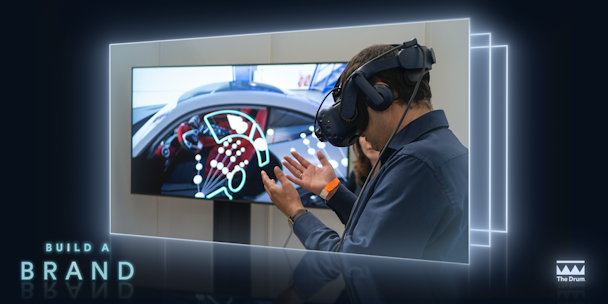How to amplify your brand awareness using augmented and virtual realities
Is your brand incorporating alternate realities into your strategies? Read on to learn how AR/VR can contribute to your brand awareness.

How to increase your brand awareness using AR/VR / AR/VR / XR Expo/Unsplash
Brand awareness is the goal of every marketer, but oftentimes awareness is overshadowed by the sheer number of competing brands. Which is why it pays to expand your horizons and think outside of the proverbial box. Virtual and augmented reality can bring your brand to life in ways never imagined, as well as forge new relationships with surprisingly, pleasant results.
The global AR/VR market has growth expectations of over $97 billion by the year 2028. This brings unprecedented possibilities for brands to expand their technological reach. Larger companies seem to be making more headway than medium or smaller companies, most likely due to the misconception that AR/VR is a budget breaking expense and requires expansive technology. Still, the jump into AR/VR marketing has been long in coming and will no doubt continue to multiply beyond our current capabilities.
What is the difference between augmented reality and virtual reality?
Both terms are often used interchangeably but are vastly different. Augmented reality overlays graphics, sounds, text, and other elements over the real world. In other words, AR comes to you. While virtual reality transports you into a computer-generated environment that is typically three dimensional with 360-degree immersion.
For the benefits of AR/VR to be realized, they must provide true value to the user. Too much time and technology has gone into the making of alternate realities for them to be used as gimmicks or just ‘eye-catchers’. Users should be able to immerse themselves in a true experience that represents the brand in an authentic way and assists them during their purchasing decisions.
Advertisement
Examples of brand usage
One of the most innovative uses of brand augmented reality is by Pepsi Max, who in 2014 installed AR screens in a London bus shelter to highlight their brand. Waiting commuters were gifted with visuals like UFOs, comets, robots, a tiger, and other objects seemingly headed toward them. It brought the brand to the forefront of consumers’ thoughts in innovative ways that broke advertising boundaries. The video of the bus stop experience garnered over six million views on YouTube making it one of the channel’s most viewed advertising campaigns.
IKEA is another iconic brand who has adopted virtual reality. Their virtual reality shopping experience is a transformative way to bring their customers into the showroom and try out various products. The responsive VR allows users to configure individual rooms with furniture, change wall colors as well as fabrics, and accessorize. They also have the option of changing the lighting and time of day. This immersive shopping experience gives customers the opportunity to experiment with different products before they commit to buying. It is IKEA’s way of the future and has changed the way customers relate to the Scandinavian brand.
Advertisement
The benefits of augmented and virtual reality
The advantages of AR and VR are just being explored by brands seeking to expand their relationships with consumers. One survey shows that 75% of brands are already planning a AR/VR strategy which suggests that alternate reality in marketing is here to stay. Engaging customers with the ever-expanding technology doesn’t have to come at a price when the rewards are so obvious.
- More touchpoints to interact with customers
- Increased traffic to product pages
- Increased word of mouth advertising
- Higher user engagement
- Increase in sales
- Decrease in returns
- Stands out from competitors
- Contributes to your brand ‘halo’
- Increases brand recall
Suggested newsletters for you
How your brand can use AR and VR
The possibilities of both alternate realities are unfathomable because technology expands on a minute by minute basis. However, there are some methods you can currently use for your brand awareness strategy.
1. Personalized content – Contributes to customer-centricity by creating unique, one-on-one experiences for consumers, whether that is at checkout, shopping, preferred social channels or other paths to personal connections. AR/VR also allows your brand a variety of touchpoints to interact with customers in a unique and personal way by thoroughly understanding your target audience.
2. Try before you buy – Enhancing the buyer experience is the most popular way to use AR/VR since it speaks directly to the customer during their purchase decision moments. Clothes, makeup, and household goods are perfect products to incorporate this type of virtual element.
3. Product introduction – Product launches are another ideal time to use AR/VR since the whole point of a launch is to bring attention to your brand. This allows consumers to get to know your product beyond an advertorial, in a more personal way that gives them a feel of how the product will benefit their lives.
4. Brand immersion – Immersive experiences are extremely popular and highly sharable with many getting millions of views. Ikea's example (see above) sets the bar for enriching the shopping experience with 'in-person' and relatable realities.
With the multitude of social channels and user-generated content available, AR/VR content is most likely to either go viral or bring extensive brand awareness. And while AR/VR are simply tools to enhance your brand, they offer extensive possibilities for your content strategy. Creating an experience that allows people to get to know you on a more personal level through the richness of AR/VR is invaluable for the future of your brand and your customers’.
For more valuable insights sign up for The Drum Plus.
